![]()
![]()
![]()
Use LEFT and RIGHT arrow keys to navigate between flashcards;
Use UP and DOWN arrow keys to flip the card;
H to show hint;
A reads text to speech;
13 Cards in this Set
- Front
- Back
- 3rd side (hint)
|
Status and Power |
Invokes a sense of priviledge. High doesn't always mean high power |
|
|
|
Power Stereotyping Theory |
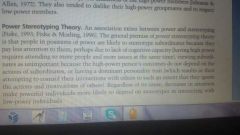
People in positions of power are more likely to stereotype subordinates because they pay less attention to them. |
|
|
|
Opression |
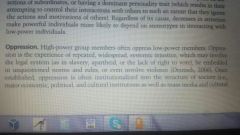
High power group members often opress low-power group members. Opression is the experience of repeated, widespread, systematic injustice, which may involve the legal system. |
|
|
|
Low power members. |
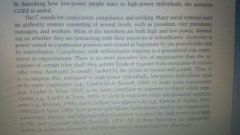
C cooperative, compliant, yielding in interactions with high-power members. O Attribution of causes of group successes to own efforts. R resistance, psychological, reactance, obstruction of high power members efforts. E Negative, evaluation of high power individuals. E |
|
|
|
Terrorism |
High power describes as a violent political act. But a humanitarian attempt at liberation from a low power perspective. |

|
|
|
The Metaphoric effects of Low power. |
Having low power in a situation can change a person. |
|
|
|
Relationship among low power groups. |
The similarity -attraction hypothesis says that two low-power groups may be attracted to one another because of their similar circumstance. |
|
|
|
Revenge |
Interaction between the high and low power individuals often results in the low power person feeling abused and mistreated. |
|
|
|
Power and Conflict |
Power and Conflict are interrelated. While power is always present in interpersonal and group interaction, conflict occurs when a person wants other group members to do something they do not want to do and the person does not habe enough power to overcome there unwillingness. |
|
|
|
Group Norms: indirect power |
Group Norms serve as substitutes for the direct use of power among groups. Norms are prescribed modes of conduct and belief that guide the behavior of group members. |
|
|
|
Conformity and Compliance |
Define as changes in behavior that result from group influences.
Compl behavioral change without internal acceptance. Also conforming to group norms frequently improves the functioning of the group at no expense to the individuals principle beliefs. |
|
|
|
The Group Mind |
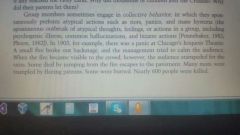
Group members engaging in collective behavior.
Crowd behavior resulted three mechanism.
Anonymity - people feel less responsible for their behavior Contagion - emotional states begin to spread from person to person in the same way that disease spread. Suggestibility- crowd members tend to completely accept suggestions, just as if they are hypnotized. 2nd explanation for the behavior is the Convergence theory, which the crowds behavior represents the converging of people with compatible needs, desires, motivations, and emotions 3rd explanation is emerged norm theory states crowd are quite heterogeneous and do not have a "mental unity". 4th deinvidulation which is a state of relative anonymity , in which group members do not feel singled out or identifiable. |
|
|
|
Summary |
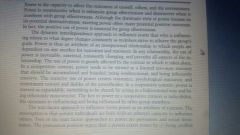
|
|

